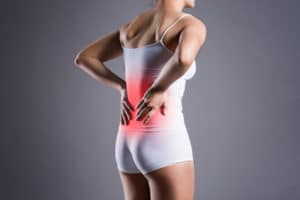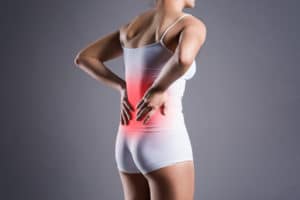
The Sacroiliac Joint: A Brief Anatomy Lesson
The reason why the sacroiliac joint may be a surprising source of back pain is that this joint lies between the iliac bone (the pelvis) and the sacrum (the triangular bone at the lowest point of the spine). The sacroiliac joint is responsible for the transfer of energy between the upper body and the lower extremities. The SI joints support the weight of the upper body, and a collection of ligaments and muscles supports these joints. This support should allow no more than 4mm of movement within the joints themselves.
The Sacroiliac Joint as a Source of Pain
Low back pain may occur when the sacroiliac joint suffers an injury or wears down due to the natural aging process. Degeneration in the sacroiliac joint may lead to pain in the buttocks, low back, groin, or legs. Movement limitations and discomfort may occur more frequently when lifting, running, or walking takes place.
In addition to low back pain, degeneration in an SI joint may result in:
- Pain in the hips or pelvis.
- “Buckling” of the leg or milder instability when walking or running.
- A need to change sitting or lying position frequently due to discomfort.
- Numbness, weakness or tingling in the lower extremities.
- Pain when moving from a seating position to a standing position.
Resolving Pain with Professional Care
In most cases, conservative methods of treatment are prescribed for SI joint pain before we consider surgery. Modalities may include medication, physical therapy, or injection therapy. All treatment plans originate from a comprehensive consultation and evaluation of low back pain. To learn more about the potential cause of low back pain, call our Princeton office at 609-890-3400.


